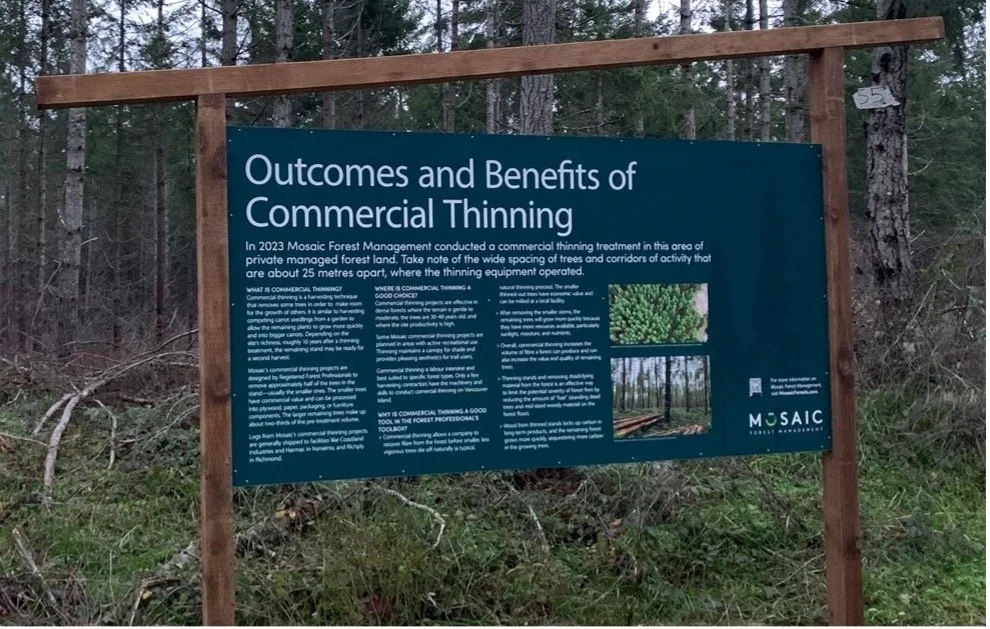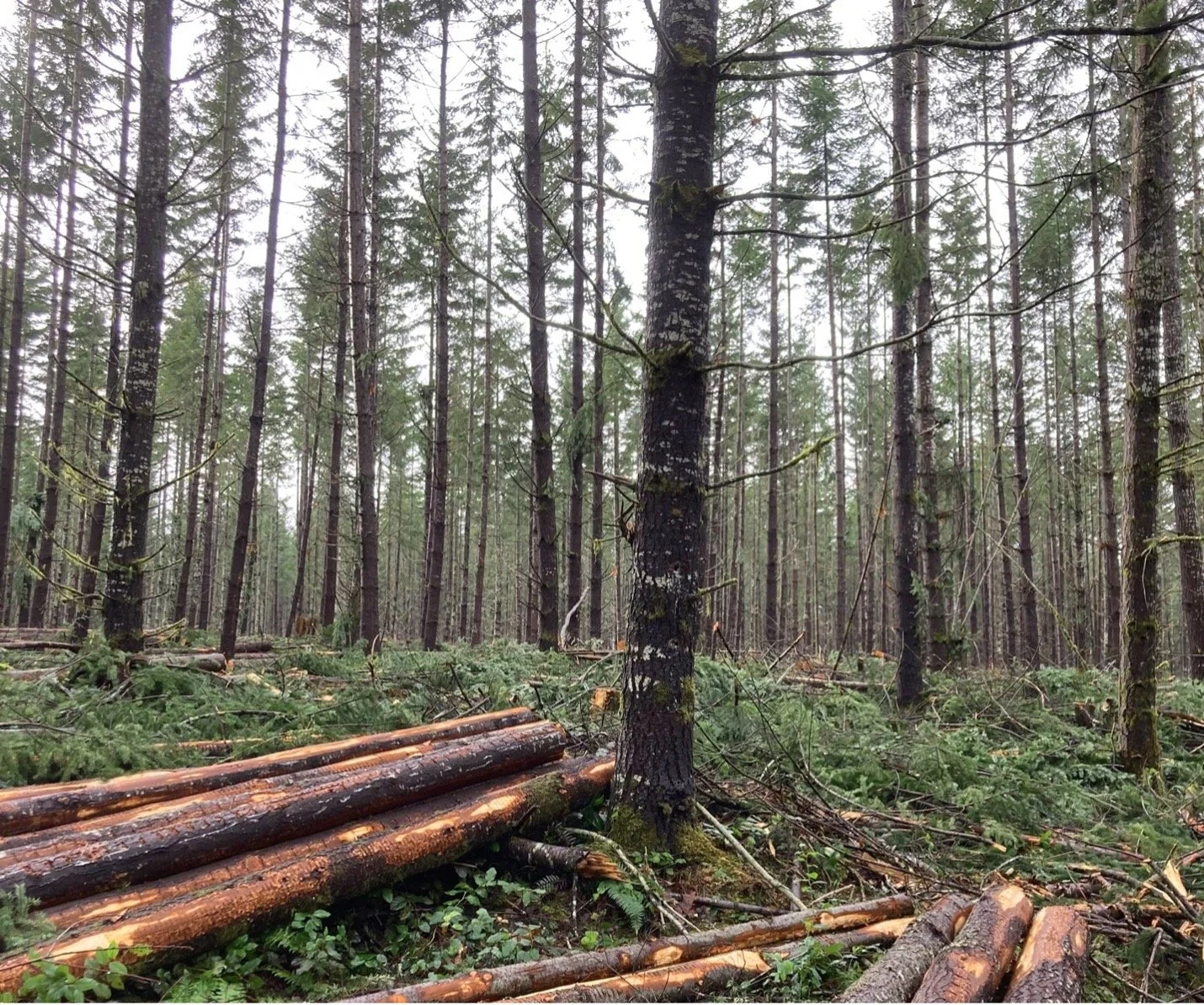Tree Thinning as Forest Gardening
Tree thinning is a common practice in active forest management in many parts of the world, where only a portion of a stand is harvested, leaving the remaining trees better access to nutrients, water and light so they can reach their full growth potential.
Information sign at Mosaic’s tree thinning project in Errington, BC
Aerial view of a commercial thinning project. Note the parallel trails where thinning equipment worked.
Thinning stands can be an effective way to limit the potential severity of wildfires.
The same principle is at work in your backyard garden — removing some carrot seedlings allows the remainder to grow more quickly and produce bigger carrots.
BC’s intense 2023 wildfires highlighted the need to use active forest management techniques to reduce wildfire risk. Thinning forests can limit the potential severity of wildfires because there is less “fuel” available to burn.
Improved long-term carbon storage is a bonus, with forest products locking up carbon that would have otherwise decayed naturally and the remaining trees sequestering more carbon because the forest grows more quickly.
Mosaic currently has tree-thinning projects underway in locations on Vancouver Island, including near Nanoose Bay. The sites are recovering small trees for processing at local facilities like Coastland Industries and Harmac in Nanaimo and Richply in Richmond.
Learn more about how Mosaic is achieving its net-zero carbon goal: MosaicForests.com/Tracking-Mosaics-Carbon-Footprint



